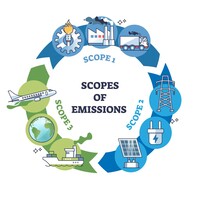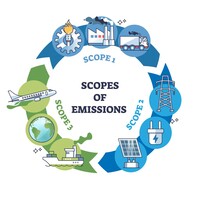
As Australia ushers in a new era of climate-related financial disclosure, many organisations are gearing up for a significant shift in their reporting practices. Since 1 January 2025, the disclosure of Scope 3 greenhouse gas (GHG) emissions transitioned from voluntary to mandatory, marking a crucial step in the country’s commitment to addressing climate change.
Scope 3 emissions, which encompass indirect GHG emissions occurring in an entity’s value chain, both upstream and downstream, present unique challenges for reporting entities. These emissions often constitute the largest portion of an organisation’s carbon footprint, making their measurement and reporting critical for understanding and mitigating climate-related risks and opportunities.
Key considerations for Scope 3 reporting
As organisations embark on their Scope 3 reporting journey, four key considerations should guide their approach:
- Track progress and set meaningful targets: Design your emissions inventory to accommodate future emission reduction initiatives. For instance, if you plan to work with key suppliers to reduce their emissions, structure your inventory to capture data on an individual supplier basis. This approach allows you to recognise decarbonisation efforts by specific suppliers rather than relying solely on industry-average emission factors.
- Collaborate across internal stakeholders: Scope 3 reporting requires input from various departments within your organisation. Engage with teams from procurement, logistics, sales and other relevant areas to ensure comprehensive coverage of your value chain. This collaborative effort is crucial for identifying the boundary of your Scope 3 inventory, determining which emission sources to include and understanding what data is available for each source.
- Be aware of potential overlaps: In certain sectors, Scope 3 emissions may overlap across different categories. For example, in the oil and gas industry, emissions from fuel combustion reported under “use of sold products” may also be captured in upstream and downstream transport categories. Consult sector-specific guidance to address these nuances and ensure accurate reporting.
- Recognise continuous improvement: Understand that your Scope 3 inventory will become more accurate over time. Initial calculations may rely on high-level estimates, often based on spend data, to identify the most significant indirect emission sources. Use these insights to focus on obtaining primary data for material areas in subsequent years. Document your approach and assumptions to support a repeatable process and facilitate external reporting and assurance.
Measuring Scope 3 emissions
The measurement of Scope 3 emissions often involves a combination of primary and secondary data. Primary data, obtained directly from specific activities within the entity’s value chain, provides the most accurate picture but requires significant effort to collect. Secondary data, derived from industry averages or proxy sources, is easier to obtain but may not fully reflect an entity’s specific activities or capture decarbonisation efforts by value chain partners.
Organisations should prioritise data that is based on direct measurement, specific to their value chain activities, timely and verified. As reporting matures, entities can refine their data collection methods, moving from predominantly secondary data to more primary data for material emission sources.
Setting Scope 3 targets
While not mandatory under Australian Sustainability Reporting Standards (ASRS), setting Scope 3 targets is increasingly important, especially for entities where these emissions represent a significant portion of their total footprint. When setting targets, consider:
- Choosing an appropriate baseline year
- Defining the target boundary (specific categories or entire portfolio)
- Deciding between absolute or intensity targets
- Developing a clear plan to achieve the target
Alternative targets related to Scope 3 emissions might include investment in downstream technology, supplier engagement goals, or initiative-oriented targets to improve understanding and measurement of the Scope 3 footprint.
Preparing for board and executive review
As Scope 3 emissions reporting becomes subject to executive and board approval, it’s crucial to establish a robust controls framework. This includes understanding data sources, review processes, risk management, and oversight committees. Considering baseline assurance before mandatory limited assurance can help identify and address potential issues early.
Looking ahead
The transition to mandatory Scope 3 emissions reporting represents a significant step in Australia’s climate action journey. While the process may seem daunting, organisations that start early, document their approach and embrace continuous improvement will be well-positioned to meet these new requirements. Remember, Scope 3 reporting is not just about numbers; it’s a valuable indicator of transition risk and an opportunity to drive meaningful change across your value chain.
As we move towards a more sustainable future, the insights gained from Scope 3 reporting will be instrumental in shaping business strategies, informing investment decisions, and ultimately contributing to global efforts to combat climate change.

